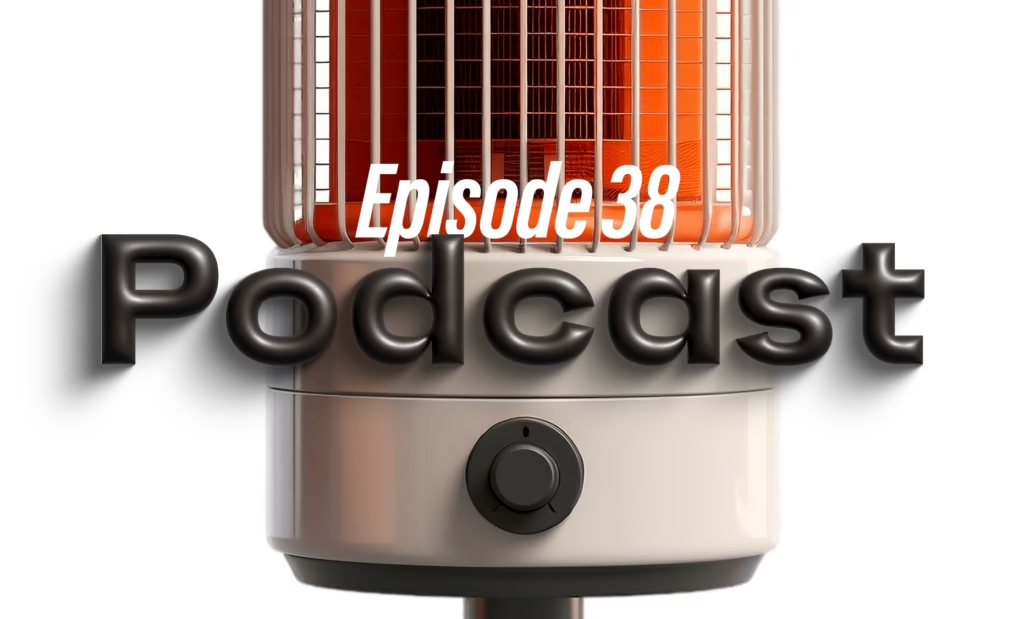By Laurier Mandin

“Can I use ChatGPT to create a go-to-market roadmap for my product?”
People have asked me this a lot, and many are surprised at my answer.
After all, I’ve been creating comprehensive versions of these for many years. They’re often the starting point for long-term engagements. Foundationally, a sound go-to-market roadmap is incredibly important and useful. What’s more, our learnings in creating one ALWAYS make the marketing efforts stronger and more effective.
Back in early 2024, I would have been quick to say that using AI to build your own product marketing plan was a terrible idea.
By 2025, I’d already changed my mind and was using tools like ChatGPT routinely in my own work.
In 2026, the landscape has shifted again: AI isn’t simply a clever writing assistant anymore. It’s embedded in workflows, showing up as “agents” that can research, organize, draft, and even help you orchestrate campaigns end-to-end.
So, here’s what I say now:
Yes. Absolutely, you can.
Whether you’re using ChatGPT or exploring other AI tools to develop your product launch strategy, you can do it all (or mostly all) yourself, for free. And you can produce a pretty impressive plan.
Why am I doing this?
That’s easy. Since you’re reading this post, you’re probably already mentally set on creating a go-to-market plan using ChatGPT, Claude, Gemini, Bard or a similar generative AI tool. You won’t listen to an agency owner’s self-interested advice.
And you’re not alone. In 2026, surveys suggest that well over two-thirds of organizations are using generative AI somewhere in their business, and nearly 9 out of 10 marketers say they use AI in their day-to-day work.
That 10th one? Probably a soon-to-be unemployed marketer. 😆
What this means is your competitors are also cranking out AI-generated plans.
The baseline has risen. The question is no longer “Should I use AI?” but “How the heck do I keep my strategy from looking just like everyone else’s?”
You’ll probably wing it, and your plan will look pretty good. Way better than you expected. You’ll be clueless about the gaps in it. You won’t know how similar it is to endless other plans ChatGPT has created, or what the AI has missed or got wrong. These hidden gaps will waste your resources and put your business at risk.
SO, I’d rather help you do it well, teach you some fundamental things to watch out for, and then be available to help make your plan great. IF you want.
You can opt to have my highly experienced team help you finesse your plan — then, if we’re a fit, give your product the most reliable branding, digital marketing and creative support on earth. Because your ChatGPT or AI-driven marketing strategy is just the beginning. And what would really be foolish is to use a plan devised without human feeling or experience to actually take your product investment straight to market. (I’m seeing it, and the results can be costly to reverse.)
More on that later, but right now, let’s do what you came here for. I think you’ll be pleasantly surprised with the result, and how much this advice strengthens the output you see.
I’ll walk you through exactly how to get started … today.
In 2025, this meant “paste prompts into a chatbot and see what comes back.”
In 2026, you can still do that. But now you can also set up AI agents to:
- “Pull together competitor snapshots”
- “Draft research questions”
- “Build simple spreadsheets or matrices”
- “Turn your plan into checklists and timelines tied to your actual tools”
For this article, I’ll stick to prompts you can drop into any capable AI tool. But if you’re already using agents or automations, treat each prompt as something your “strategy agent” can run, refine and re-run over time.
I’m even giving you my best, launch-proven AI prompts. For free.
First, let me be clear about what you can expect:
In the next few minutes, you’ll learn how to:
- Create a basic go-to-market plan using AI tools like ChatGPT
- Use my proven, carefully structured prompts to get the best from AI
- Avoid common mistakes that waste time or (very commonly) mislead you
- Know which parts of your plan need human validation
- Start gathering useful market insights immediately
Fast Start: Your First AI Marketing Plan in 60 Minutes
Step 1: Frame Your Product (5 minutes)
Start by creating a clear product brief for the AI to work with. Copy and paste the following prompt into ChatGPT or your AI tool of choice, and add in your product’s specifics.
Your First AI Marketing Prompt:
Help me create a go-to-market plan for my product. Here are the key details:
- Product name and type:
- Core problem it solves:
- Target customer:
- Current stage: (concept, prototype, ready to launch)
- Key features/benefits:
- Approximate price point:
- Main competitors:
Quick Tip: Be specific but concise. Generative AI tools work better with clear, factual information rather than lengthy descriptions.
Step 2: AI Market Research Foundations (15 minutes)
Now that you have a basic brief, let’s gather initial market insights using ChatGPT or your AI tool of choice. Use this prompt:
Market Research Prompt:
Based on my product details, please:
- Identify 3-5 key market segments we should consider
- List the top pain points for each segment
- Analyze potential barriers to entry
- Suggest 3 possible competitive advantages. Please explain your reasoning for each point.
🚩 Red Flag: If the AI gives you market sizes, growth rates, or competitor revenue numbers without clearly citing the source, treat them as placeholders, and not facts. Even the latest models still hallucinate specifics quite a lot. Use the numbers as hypotheses to verify with real research (reports, filings, direct customer data), not as inputs to your financial model.
Step 3: Initial AI Product Positioning (15 minutes)
With these market insights in hand, let’s work on your positioning. Here’s your next prompt.
Positioning Prompt:
Using the market segments and competitive analysis, please:
- Draft 3 different positioning statements for my product
- Identify the key differentiators for each approach
- Suggest which customer segments each positioning would appeal to the most
- List potential challenges or weaknesses for each option
💡 Quick Win: Copy these positioning statements into a simple survey and share it with 5-10 potential customers. Real feedback is hugely valuable for uncovering AI errors. ChatGPT has never wanted, shopped for or used a product!
Step 4: AI-Driven Channel Strategy (15 minutes)
Now let’s identify where and how to reach your customers. Use this prompt.
Channel Strategy Prompt:
Based on our target segments and positioning, please:
- Recommend the top 3 marketing channels to reach our audience
- Suggest a basic content strategy for each channel
- Outline potential partnerships or influencer collaborations
- Provide rough budget allocation percentages across channels
🎯 Pro Tip: AI tools excel at suggesting channels but often miss emerging opportunities. Add any platforms or communities you know are popular with your target audience.
Step 5: Your AI Product Action Plan Assembly (10 minutes)
Finally, let’s pull everything together into an actionable product marketing plan:
Action Plan Prompt:
Please create a 90-day launch timeline including:
- Key milestones and deadlines
- Essential marketing activities for each phase
- Required resources and tools
- Success metrics for each stage
- Potential risks and mitigation strategies
⚠️ Reality Check: Your AI-generated plan is a starting point, not a final strategy. Use it to:
- Identify gaps in your thinking
- Spark new ideas
- Create a foundation for deeper planning
- Guide discussions with team members and advisors

Next Steps: Your Action Items
Now that you have your basic plan, it’s time to make it stronger. In the next section, we’ll cover:
- How to validate your AI-generated insights
- Ways to avoid common AI planning pitfalls
- Tools for deeper market analysis
- When to bring in human expertise
But first, take these immediate actions:
- Review your generated plan for obvious gaps
- Share it with at least one knowledgeable colleague
- Start validating the key assumptions
- Begin gathering real market data
Making Your AI-Generated Plan Better
Now that you have your initial plan, let’s strengthen it. Most AI-generated marketing plans share common weaknesses. Your job now is to spot and fix them.
Validating Your Market Insights
AI tools like ChatGPT make educated guesses about your market. Here’s how to verify them:
Market Validation Prompt:
Review my market analysis and identify:
- All assumptions that need verification
- Specific data points to validate
- Suggested research methods for each point
- Red flags or potential inconsistencies
🔍 Research Reality: The best validation combines multiple approaches:
- Direct customer conversations
- Industry reports
- Competitor analysis
- Social media listening
- Search trend analysis
Strengthening Your Product Positioning
AI often suggests “safe” positioning that could apply to any similar product. Long story, but that is anything but real product positioning! Let’s make yours distinctive:
Positioning Enhancement Prompt:
Analyze my current product positioning and:
- Identify generic or overused elements
- Find unique aspects of my product that aren’t emphasized
- Suggest ways to make each claim more specific and memorable
- Create variations that challenge conventional category approaches
💡 Quick Test: If you cover up your product name and the positioning could apply to any competitor, it needs more work.
Channel Strategy Deep Dive
AI tools like ChatGPT excel at suggesting obvious channels and might miss unique opportunities.
Let’s dig deeper:
Channel Optimization Prompt:
For each recommended marketing channel:
- List specific tactics that would be unique to my product
- Identify potential first-mover advantages
- Suggest tests to validate channel effectiveness
- Outline success metrics that go beyond standard KPIs
🎯 Channel Tip: The best opportunities often lie in underutilized channels or unique combinations of channels your competitors haven’t considered. AI is bad for omitting unconventional choices, and may miss newer ones.
Building In Reality Checks
AI tools like ChatGPT can sometimes create overly optimistic timelines and budgets. Let’s have AI add some pragmatic constraints:
Reality Check Prompt:
Please review my current plan and:
- Identify resources required for each activity
- Flag activities that typically take longer than estimated
- Suggest backup plans for high-risk elements
- Add buffer time for unexpected challenges
⚠️ Warning Signs that your plan needs more work (these are common — AI has never executed one):
- Timeline seems too compressed
- Budget feels surprisingly low
- Resources aren’t clearly specified
- Success metrics are vague
- Risks aren’t thoroughly addressed

Advanced AI Marketing Strategy: Standing Out in 2026
Here’s another reality check: In 2026, using AI for marketing planning is beyond table stakes. It’s infrastructure. Most companies now use AI in multiple business functions, and 80–90% of marketers report using AI somewhere in their day-to-day work. Still, only a small minority are seeing meaningful, scaled business impact from it. Basic AI-generated plans are converging into the same patterns. The edge now comes from how you combine AI with proprietary insight, data, and uncomfortable, non-templated strategic decisions.
Finding Unique Market Opportunities with AI
Most AI-generated plans overlook hidden opportunities. Let’s dig deeper:
Opportunity Mining Prompt:
Analyze my market and identify:
- Underserved customer segments
- Unmet needs that competitors are missing
- Emerging trends that could create new opportunities
- Unconventional ways to solve customer problems
- Potential market gaps that AI might typically overlook
🎯 Strategic Insight: The best opportunities often lie in the spaces between standard market segments and conventional solutions.
Breaking Free from AI Template Solutions
AI likes to fall into proven (overused, boring, even completely lame) approaches. Sure, these feel safe, but they rarely create breakthrough success. Here’s how to push beyond:
Using AI Agents Without Letting Them Drive the Bus (2026 Update)
A lot of teams in 2026 are moving from single prompts to semi-autonomous AI agents that can research, summarize, draft and even schedule work across tools.
Used well, that’s really powerful: an agent can keep your roadmap updated, track experiments, and surface anomalies faster than a human ever could.
BUT used badly, you get faster sameness: an agent that faithfully scales a mediocre, generic strategy.
The fix here is not complicated:
- Use agents to do the grunt work (research, structuring, formatting, follow-ups).
- Keep humans in charge of positioning, trade-offs, and what you’re willing to bet the company on.
- Treat every agent as a junior strategist: fast, tireless, brilliant at patterns… but one that is completely blind to what it feels like to be your buyer.
Pattern-Breaking Prompt:
Review my current marketing plan and:
- Identify elements that feel generic or expected
- Suggest unconventional alternatives for each
- Find opportunities to combine approaches in unique ways
- Propose “what if” scenarios that challenge assumptions
💡 Innovation Tip: Use AI to generate multiple conventional approaches, then look for ways to combine or flip them in unexpected ways using your own fresh and less-constrained ideas.
Building a Sustainable Advantage
In a world where everyone (and her grandmother) has access to AI tools, a sustainable advantage comes from combining AI efficiency with human insights:
Competitive Edge Prompt:
Help me identify:
- Unique assets or capabilities my company has
- Ways to combine these with AI-generated strategies
- Opportunities to create barriers to imitation
- Areas where human expertise adds distinct value
⚠️ Critical Warning: The more you rely solely on AI suggestions, the more your strategy will mirror your competitors’. Use AI to handle the heavy lifting of analysis and ideation, but let human creativity and insight guide the final decisions and spark breakthroughs.

Putting All This Together: Your 2026 Marketing Game Plan
As you’ve probably gathered, the key to success is NOT choosing between AI and human expertise (or between chatbots and agents). AI now handles a big chunk of the heavy lifting in research, drafting and orchestration. Human expertise keeps things fresh, targeted, and grounded in reality.
The win comes from designing the collaboration: deciding what your agents do, what your humans decide, and how real-world feedback feeds back into both.
In my work right now, the goal is to always make the outputs noticeably and remarkably better than what an AI can do.
Here’s your plan for making it happen:
Week 1: Foundation Building
- Use my Fast Start prompts to use AI to generate your initial marketing plan
- Identify gaps and assumptions that need validation
- Begin real-world customer research
(This is tricky but super important. Reach out if you need help with it.) - Share the plan with key stakeholders
Week 2-3: Validation & Refinement
- Verify AI-generated market insights
- Test positioning with real customers
- Develop unique angles using my pattern-breaking techniques
- Adjust your channel strategy based on actual customer behavior
Week 4+: Strategic Implementation
- Launch initial campaigns
- Monitor for sameness in your market that AI might miss
- Look for opportunities others are missing. Brainstorm and think these through!
- Continuously refine based on REAL data and human intuition
Implementation Prompt:
Based on everything we’ve covered, please create:
- A weekly checklist for the first month
- Key metrics to track
- Warning signs to watch for
- Adjustment triggers and responses
🎯 Success Factors for 2026:
- Speed isn’t everything; being distinctive matters way, WAY more
- Validate AI insights with real-world data and human smarts
- Look for opportunities in areas AI might miss
- Build on your unique superpowers and precious human insights
When to Get Help
While AI tools can take you remarkably far, certain situations signal it’s time for expert help:
- Entering highly competitive markets
- Launching revolutionary or disruptive products
- Creating a new product category
- Scaling beyond initial success
- Hitting growth plateaus
- Needing breakthrough differentiation and positioning

Final Thoughts
AI is absolutely transforming product marketing, making good basic strategies accessible to everyone.
That is exciting!
A rising tide lifts all boats. But as the baseline rises, standing out requires more than basic AI-generated plans. The winners in 2026 and beyond will be those who best combine:
- AI efficiency
- Human creativity
- Market intuition
- Strategic thinking
- Real-world validation
Start with my AI prompts, but DO NOT stop there. Use them as a foundation to build something truly distinctive that sets YOUR product apart.
Ready to get started? Scroll back up 👆 to my Fast Start section and begin building your plan. Remember: AI is your assistant, not your strategist or your mom. You own this. Which brings us back to…
IMPORTANT: Even in 2026, AI has NEVER felt a need to own a product, fantasized about one, bought or loved one. It can’t experience or imagine the intense feelings that buyer motivation is built upon. It has also never experienced the impact of success or failure from the point of view of a buyer or the product’s maker. All of this equals a massive gap.
The magic happens when you combine its speedy analytical power with human unique insights and creativity.
Want some help from a team of highly experienced product launch experts? Hit the orange button below.
We’ll talk to you about how we bring the pieces together, position your product for success — and keep everything moving smoothly as you launch!
What do you think? How did it go? I’d love to know! Email me about your success, struggles or your insights!





